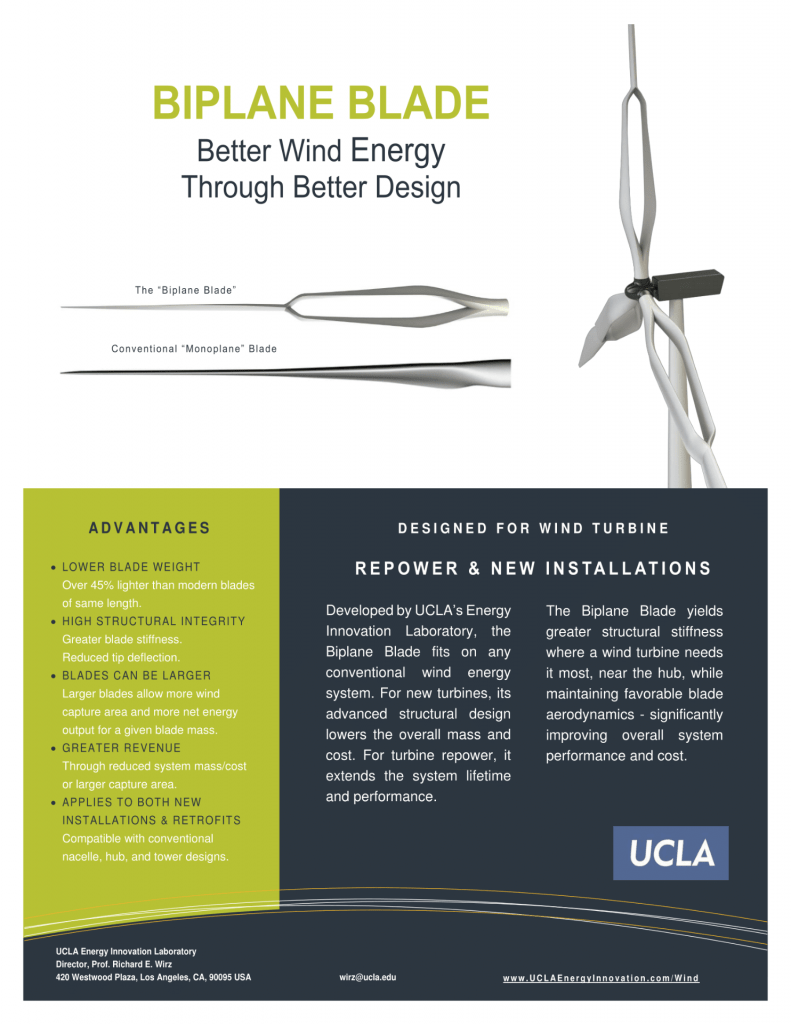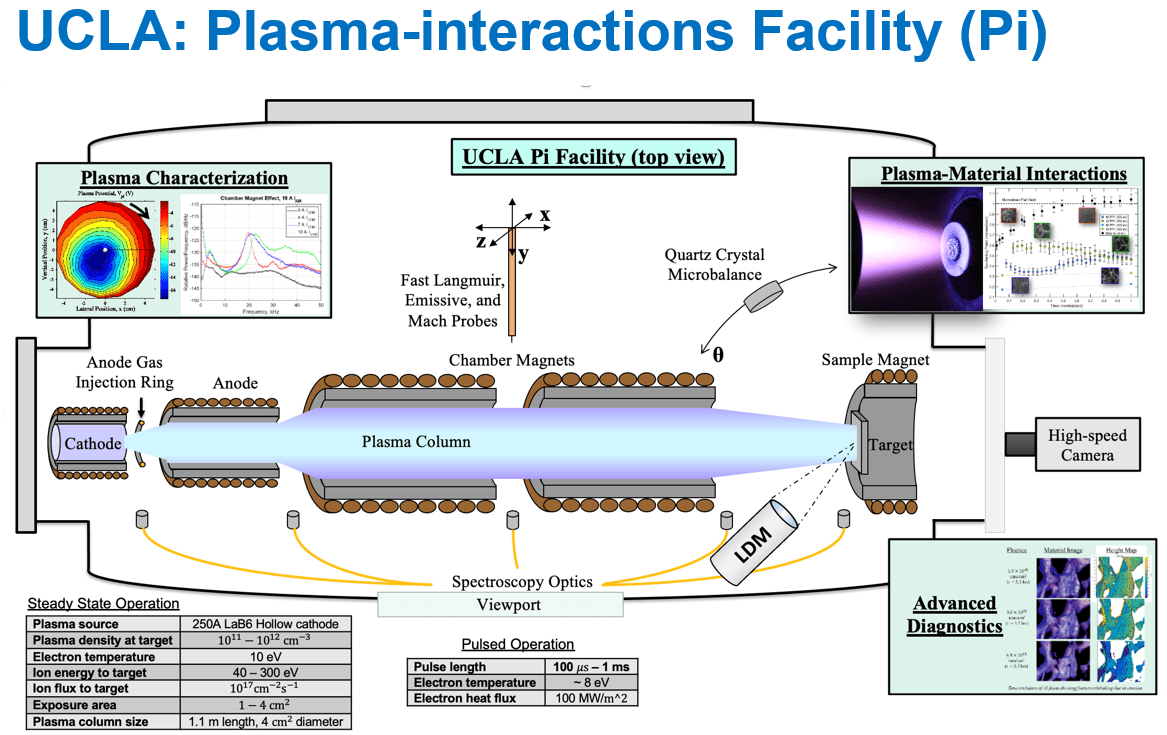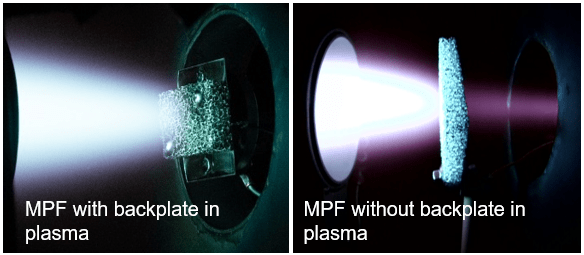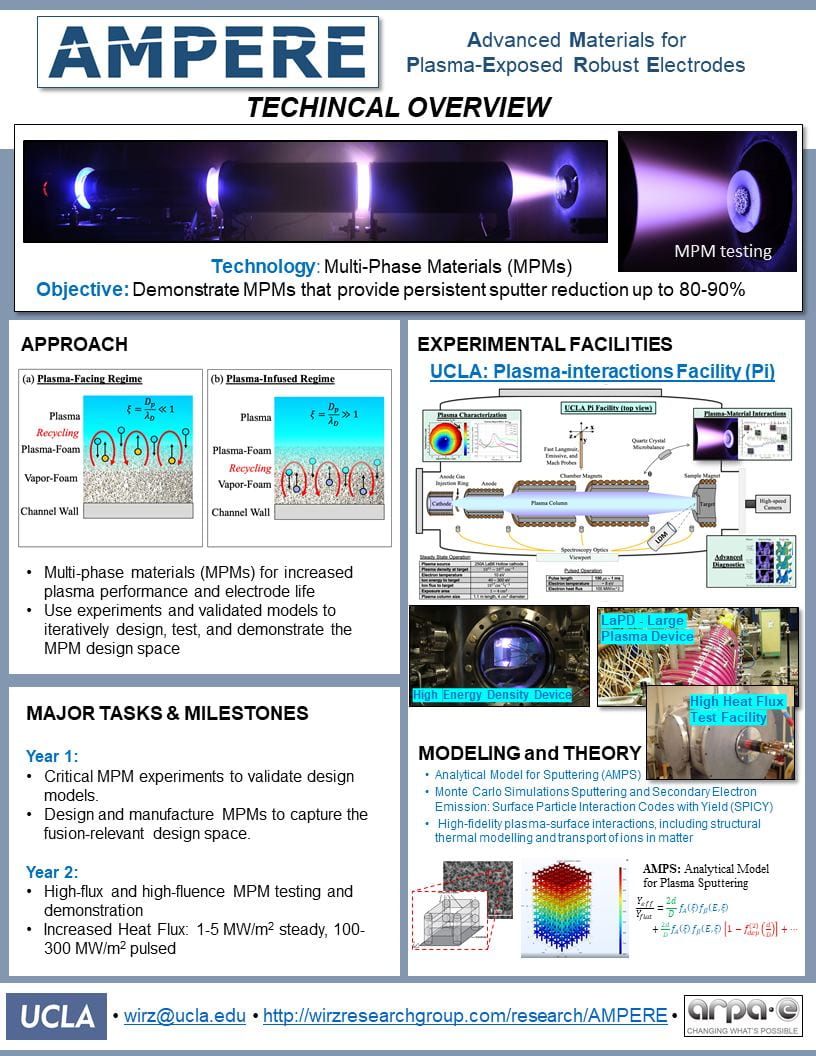
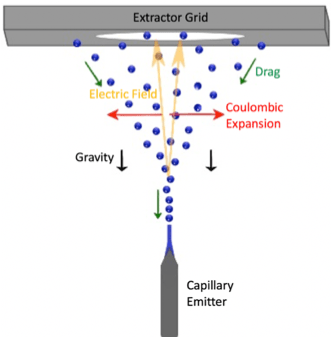 |
Electrospray ModelingHenry Huh, McKenna Davis, Shehan Parmar Recent advancements in electrospray thrusters have unveiled their extraordinary potential for a variety of aerospace applications. In particular, colloidal electrospray thrusters provide unprecedented thrust resolution and control over spacecraft position and orientation. Electrospray thrusters first flew in space in 2015 on the Space Technology 7 (ST7) mission, demonstrating nearly 2,500 hours of continuous operation. Their lifetime was limited by a myriad of factors including propellant deposition on grids inside the thruster and propellant decomposition. When a conductive liquid is subjected to a strong electric field, it deforms in a predictable manner, forming a conical meniscus which tapers off into a jet before emitting droplets. At UCLA PSPL, we discretize the electrospray into distinct regions for discussion and modeling purposes: 1. Extraction Region: The electrostatic force overcomes the fluid surface tension to form a cone-jet and generate droplets. This region is simulated in the PSPL ElectroHydroDynamic (EHD) Model. The PSPL ElectroHydroDynamic Model, Interaction Model, and Plume Model function independently, but in serial, to fully simulate an electrospray. The EHD Model takes experimental operating conditions (voltage, flowrate, propellant properties) and simulates jet and droplet formation using mass, charge, and energy conservation laws. The droplets output from this model can then be imported into the Interaction Model, which simulates plume expansion using electric field, Coulombic, gravity, and drag forces. Once droplets are sufficiently dispersed that their dynamics are not dominated by one another, but rather by the applied electric field, an Interaction Model plume profile can be imported into the Plume Model, which simulates electrostatic plume dynamics further downstream with great computational efficiency. Simulated plumes generated by PSPL electrospray models can be validated against in-house experimental data obtained in the Highly Optimizable Apparatus for Groundbreaking Investigation of Electrosprays (HOAGIE) vacuum chamber. Additionally, computational models can predict design changes which can be implemented experimentally to improve thruster lifetime and performance. This synergy between experimental and computational efforts will allow UCLA PSPL to continue our pioneering work in electrospray propulsion and contribute to many missions in the future. |
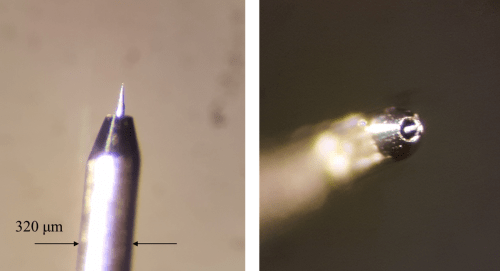 |
Advanced Electrospray Thruster ConceptsPeter Wright, Anirudh Thuppul, Adam Collins The Plasma and Space Propulsion Laboratory at UCLA is investigating advanced electrospray emitter concepts for high performance, long lifetime, and highly throttlable thrusters. In particular, the hybrid emitter geometry, which consists of a capillary emitter with a protruding coaxial needle, allows for variable performance depending on the state of the meniscus. This design takes advantage of the natural increase in specific charge of emission as current decreases to produce high specific impulse operation at low flow rate and high thrust-to-power operation at high flow rate. The increased electric field when the needle protrudes from the meniscus has the potential for ion mode emission, while the device operates in droplet emission mode with the needle submerged below the meniscus. A time of flight system is also being developed in order to characterize the advanced electrospray thruster concepts. Time of flight techniques will allow for the measurement of critical beam parameters such as particle velocity, mass flow rate, and estimated thrust. Through time of flight characterization the performance of these advanced electrospray thrusters can be evaluated and improved upon, which is critical to the research efforts. |
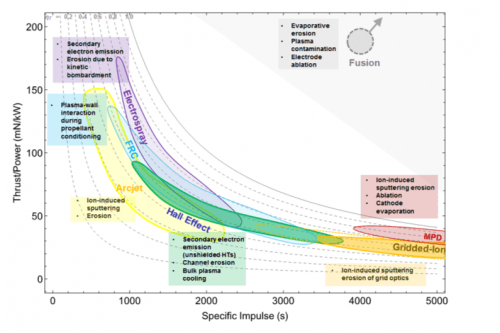 |
Plasma-Material Interactions for Electric PropulsionAngelica Ottaviano, Richard Wirz The study of plasma-material interactions (PMI) is fundamental to improving the performance and lifetime of many electric propulsion (EP) devices. PMI processes such as ion-induced sputtering, sputter erosion, plasma contamination, and secondary electron emission (SEE) have a direct impact on important thruster parameters. Solving these PMI issues is necessary to develop and operate high-power thruster concepts, such as magnetoplasmadynamic (MPD) thrusters and advanced fusion propulsion concepts. Engineering plasma-robust materials may ultimately lead to prolonged thruster lifetimes, higher ∆V for faster orbit transfers, and improved total thruster efficiencies. The EP and nuclear fusion communities have made recent progress in designing plasma-facing materials with advantageous PMI characteristics. Surfaces with complex geometries have shown promising results for the suppression of SEE and ion-sputtering rates. Furthermore, these materials can be used in conjunction with liquid metals for designing regenerative plasma-facing surfaces. At UCLA’s Plasma & Space Propulsion Lab, several in-situ and ex-situ diagnostics are employed for PMI investigations to provide a complete picture of the plasma and material behavior during exposure. These include scanning electron microscopy, energy dispersive X-ray spectroscopy, stereo-microscopy, profilometry and weight loss measurements. Novel diagnostics for visualizing surface erosion of featured surfaces have been benchmarked using a hollow cathode driven plasma column that delivers plasma densities of order 10×18 m-3 to target samples in the Pi facility. Results from propulsion-relevant PMI experiments show surface recession and the capture of transient events, such as flaking, via in-situ optical profilometry, as well as changes in the the material SEE properties and sputter transport and deposition within porous foam surface structures. |
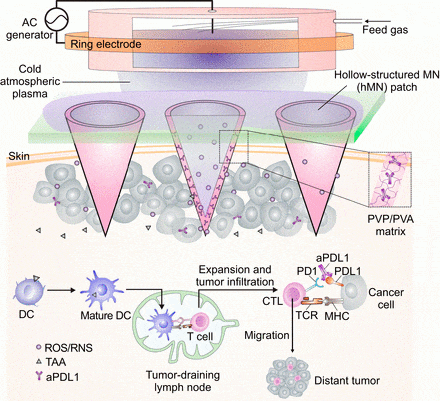 |
Plasma for cancer immunotherapyZhitong Chen, Richard Wirz Strategies to improve efficacy and reduce side effects of immune checkpoint blockade (ICB) therapy are clinically relevant. Here, we described a transdermal cold atmospheric plasma (CAP)-mediated ICB therapy. Local delivery of CAP through hollow-structured microneedles as microchannels promote the release of tumor- associated antigens by CAP. The subsequent T cell-mediated immune response can be augmented by the immune checkpoint inhibitors delivered via microneedles, resulting in enhanced local and systemic anticancer immunity. The synergism between CAP and ICB integrated with microneedles provides a platform technique for cancer treatment and other diseases in a minimally invasive manner. (www.pnas.org/cgi/doi/10.1073/pnas.1917891117)
|
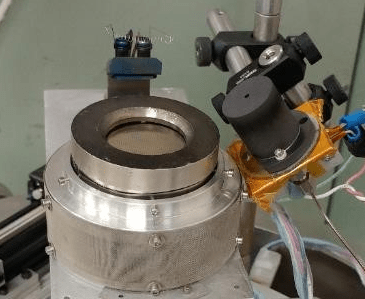 |
Development of the Miniature Xenon Ion (MiXI) ThrusterStephen Samples, Richard Wirz At PSPL we are developing the Miniature Xenon Ion (MiXI) thruster to operate both as primary propulsion for CubeSat and SmallSat missions, and as secondary propulsion for larger missions. MiXI, first developed in 2001 by Wirz, is a 3 cm diameter, 30 – 100 W high efficiency miniature gridded ion thruster. We are incorporating new discharge designs, such as the Axial Ring Cusp Hybrid (ARCH) discharge, into MiXI, and characterizing both MiXI(3-Ring) and MiXI(ARCH) with miniature hollow cathodes. To further characterize the performance, a diagnostics suite including Faraday probes, emissive probes, and ExB probes are being developed for plume measurements. PSPL is also collaborating with the UCLA BruinSpace club to propose a MiXI flight demonstration as a part of Project RAPID, with full CubeSat bus fabrication and assembly. Recent publications for this project include:
|
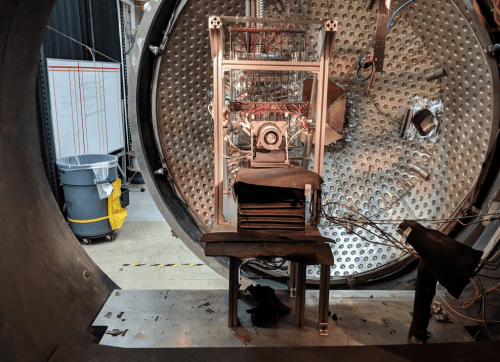 |
Fast Optical Emission SpectroscopyMary Konopliv, Richard Wirz, Lee Johnson Optical Emission Spectroscopy is a non-intrusive optical method for analyzing plasma properties including electron temperature emitted by a plasma source, such as the plasma column in UCLA’s Pi facility or a Hall thruster at JPL. This optical method measures plasma parameters with a collection optic inside of the vacuum chamber but does not interfere with the measured plume as a semi-invasive probe would. With OES, the spectrum of photons emitted by a plasma source due to interactions between electrons and xenon (or another gas) atoms and ions is measured. The intensities of the spectral peaks are related to plasma parameters such as electron temperature through a collisional radiative model. It is possible to include as few as two emission lines in the CRM analysis for xenon described by Karabadzhak, and in particular, the ratio of 823 and 828 nm spectral line intensities allows for determining the electron temperature. These two wavelengths can be captured using line filters placed in a beamsplitter apparatus with plasma discharge light captured with a collection optic passing through. Thus, optical emission spectroscopy offers an approach to perform non-intrusive measurements that do not disturb plasma while gathering data. This allows for obtaining diagnostics of inaccessible or remote plasma, such as plasma present in a thruster operating on a satellite in orbit. This project is focused on fast optical emission spectroscopy which implements the concept of OES discussed above at high speeds, thus posing as a method capable of gaining insight into plasma turbulence through time-resolved measurements. A challenge with fast optical emission spectroscopy is capturing enough light with an intensity above the noise threshold. Previous optical emission spectroscopy systems have implemented spectrometers as an instrument for capturing light and have been successful in detecting a signal far above the noise level. However, spectrometers integrate the signal over an exposure time rather than making high-speed time-resolved measurements. With faster measurements with frequencies ranging from hundreds of kilohertz to hundreds of megahertz, the measured signal has a much lower intensity, making it difficult to distinguish the signal from noise, especially for operating conditions that produce dimmer discharge plumes. A setup for fast optical emission spectroscopy is shown in the schematic below. Light from the plasma plume is captured inside the chamber with a collection optic. The light is then divided through the beamsplitter and line-filtered with the desired wavelengths for later analysis. The two light paths are then detected by a pair of temperature-controlled avalanche photodiodes. The signal is amplified with high-speed transimpedance amplifiers and measured with a pair of digital multimeters and a multi-channel oscilloscope. |
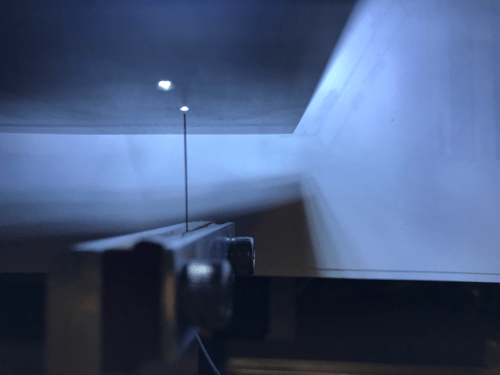 |
Assessment of Grid Impingement for Electrospray Thruster LifetimeAdam Collins, Richard Wirz, UCLA Electrospray Team The Laser Interferometry Space Antenna (LISA) mission is a European-led gravitational wave observatory consisting of three independent spacecraft flying in a synchronized formation. Each spacecraft must operate “drag-free” against any disturbances or accelerations that would impact the signal-to-noise ratio of the gravitational wave signal. Busek Co. developed the Colloid Micro-Newton Thruster (CMNT) for the LISA Pathfinder ST7 mission to demonstrate colloid electrospray propulsion as a viable technology for disturbance reduction. UCLA’s Plasma & Space Propulsion Laboratory (PSPL) is collaborating with NASA JPL, Busek Co., and UCI to develop and validate updates and improvements to the ST7 CMNT system along with performance and lifetime models to demonstrate the technology for LISA. The Highly Optimizable Apparatus for Groundbreaking Investigations of Electrosprays (HOAGIE) was developed for conducting experimental studies of the CMNT-geometry electrospray emitter to evaluate plume mass and current profiles. |
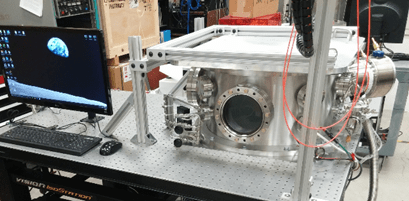 |
Microplasma Photonic Crystal and Metamaterials DevelopmentNolan Uchizono, Richard Wirz Metamaterials are man-made devices engineered with sub-wavelength features, producing extraordinary behavior, such as negative refractive index or nonlinear dispersion. Integrating a plasma discharge enhances the function of these metamaterial structures, enabling modification and control over their response. Our research focuses on the excitation of electron density oscillations at the plasma/dielectric interface using metamaterials as coupling devices. This effort is part of a larger Multidisciplinary University Research Initiative (MURI) between Stanford, UCLA, UW, UT-Austin, and PSU. |
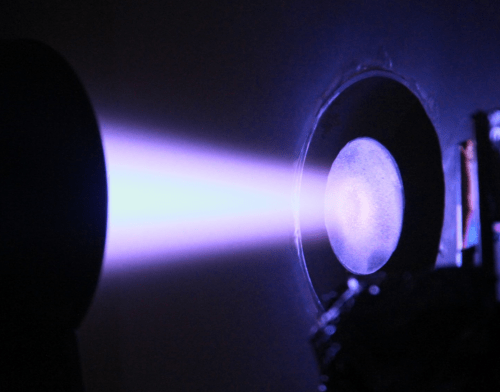 |
In-situ Sputtering Yield Measurements of Micro-architectured MaterialsGary Li, Chris Dodson, Dan Goebel, Richard Wirz We investigate the time-dependent sputtering behavior of materials with micro-architectured surfaces for extending the lifetime of devices with similar plasma environments (electric propulsion/fusion). A hollow cathode generated argon or xenon plasma is directed to a biased target via solenoid magnets to provide energetic ion bombardment. Tested materials include refractory metals (molybdenum, rhenium), carbon-based compounds, and dielectric (Al2O3, Macor). Samples with micron-scale surface features are tested to determine whether the sputtering yield of engineered materials can be reduced significantly. Angular sputtering profiles are measured using a scanning quartz crystal microbalance, which are then integrated to obtain the total sputtering yield. The in situ capability of the QCM allows us to measure the time-resolved sputtering yield as the material surface evolves as a result of ion-induced erosion. Results for a micro-architectured molybdenum sample are presented in Ref. [1] We have recently begun testing porous materials, i.e. “foams”, for being volumetrically structured materials as opposed to surface featured materials. Commercially produced foams are manufactured from a variety of methods including slurry-based forming and chemical vapor deposition on substrate structures. Pure metallic foams such as aluminum and copper are created from the former method and do not have an underlying substrate. Recent tests have shown that metallic foams have sputtering yields that are substantially reduced compared to that of flat materials. References |
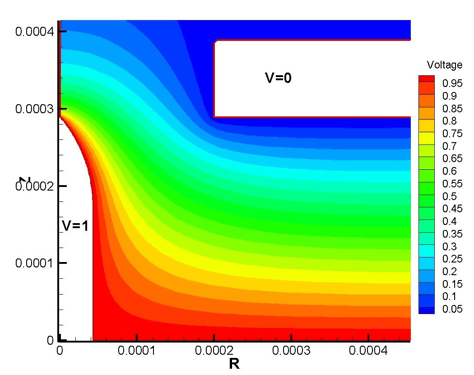 |
Investigation of Ionic Liquid Electrospray Extraction MechanismsAnirudh Thuppul, Gary Li, Peter Wright, Richard Wirz In collaboration with AFRL, we investigate extraction mechanisms in ionic liquid electrospray thrusters for optimizing for the design of multi-emitter arrays. Initial studies will include electrostatic simulation of the emitter-extractor domain to determine particle paths for varying geometries. As this project is ongoing, future efforts may include collaborative experimental investigation of thruster prototypes, electrospray plume characterization, and electrohydrodynamic modeling and simulation. |
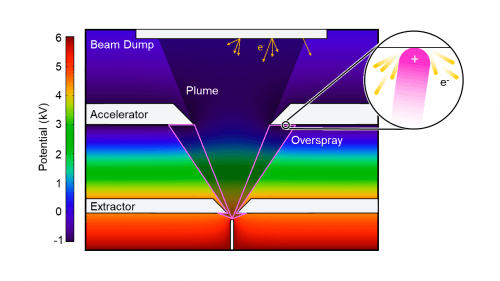 |
Ion-Induced Electron EmissionJared Magnusson, Adam Collins, Richard Wirz The potential effects of ion-induced electron emission and other sources of secondary current are crucial when studying electrospray thrusters. Informed by published solid-state theories relevant to electrospray thruster ion emission modes, we seek to calculate and verify the secondary electron yield coefficients of a commonly electrosprayed propellant ions striking a thruster electrode as a function of projectile energy. The motivation behind this research is to begin discussion of secondary currents and facility effects on electrospray thruster performance, as understanding even the most minute electrospray physics is imperative to meeting life requirements often in excess of several thousand hours. These results will build upon and expand the Electrospray Lifetime Model recently published (Thuppul et al., “Lifetime Considerations for Electrospray Thrusters”, Aerospace, 7, 108, 2020). |
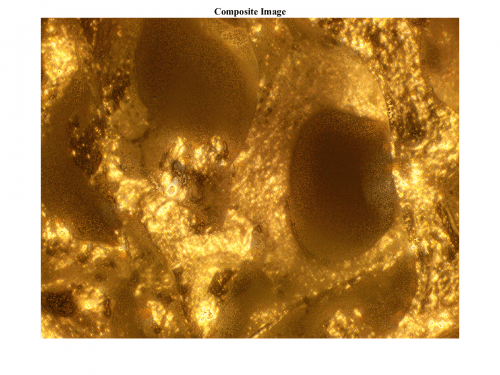 |
In-situ Visualization of Ion-induced Surface Erosion using a Long Distance MicroscopeAngelica Ottaviano, Anirudh Thuppul, Chris Dodson The objective of this work is to provide in situ imaging of micron-scale surface structures using a long distance microscope (LDM) to study plasma-material interactions, in particular ion-induced erosion of plasma-facing materials. A CMOS camera and microscope system is used to capture live images of material erosion resulting from exposure to a magnetically confined plasma. Focus stacking images to create composite images and height maps at various time steps yields videos displaying the time-dependent erosion. Understanding plasma-material interactions will contribute to improved longevity of plasma devices in applications such as electric propulsion and fusion reactors. |

This research resulted in the Start-Up Element 16 Technologies, Inc.
Please visit their website at: https://element16.com/
Thermal Energy Storage |
|
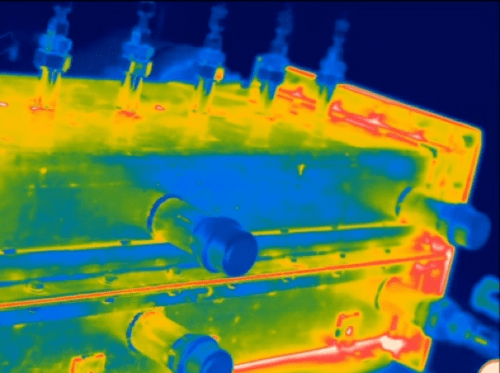 |
Lab-scale demonstration of thermal energy storage concept with sulfurAmey Barde, Kaiyuan Jin, Mitchell Shinn, Karthik Nithyanandam, Richard Wirz The bundled TES is designed to demonstrate the performance of sulfur based thermal energy storage system operating in the temperature range of 200-600 C to store at least 5kWh thermal energy. The bundled TES design is based on the shell and tube heat exchanger, with sulfur tubes enclosed in a rectangular shell. 10 sulfur tubes are installed that results in a total storage capacity up to 8 kWh. Total 21 baffles are installed that provide tortuous path for air and enhance heat transfer between air and sulfur. A cartridge heater is installed in each sulfur container so that the TES system can be thermally charged in a hybrid mode. The system is insulated using high temperature microporous insulation to minimize the heat loss. The experimental measurements from the full cycle testing will also be utilized to validate the numerical model that is developed to investigate the influence of various design and operating parameters on the performance of thermal battery. |
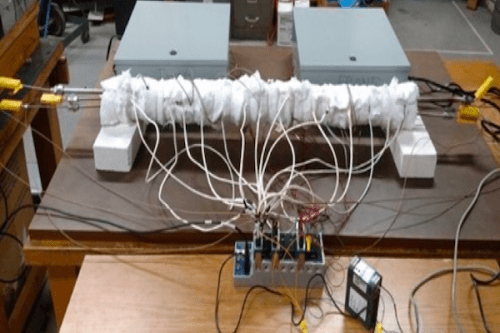 |
Single element thermal energy storage systemAmey Barde, Mitchell Shinn, Richard Wirz The single element test is an important step towards design and fabrication of a test facility for the demonstration of solar thermal energy storage technology using sulfur as a thermal storage material. It provides a controlled environment to investigate the performance of thermal storage fluid, based on the thermal storage capacity and the charging-discharging rate. The single element test serves to achieve two important objectives.
|
 |
Pressure-temperature characteristics of sulfurAmey Barde, Mitchell Shinn, Richard Wirz Pressure-temperature characteristics of sulfur are investigated in sealed containers up to 600 degrees C. The analysis provides crucial information regarding the maximum system pressure during thermal charging and discharging of the system. The sulfur container is designed based on the maximum system pressure for safe and effective containment sulfur over a long period of operation. During this analysis, effect of sulfur loading fraction on the system pressure is studied. The loading fraction of the sulfur is defined in Figure 4 below. The experiments were conducted for three different loading fraction, 20%, 50%, and 80%. Experimental determination of sulfur pressure temperature characteristics have shown that sulfur has a desirably low vapor pressure (< 200 PSIg at 600 ℃). Ultimately, such a modest vapor pressure results in being able to design a system with tubes of small pipe thickness (schedule 10) that leads to low containment cost. In addition, effect of sulfur container material (SS316L, SS316 and Inconel) on the pressure-temperature characteristics were studied. No significant effect of container material was found on the pressure-temperature characteristics. |
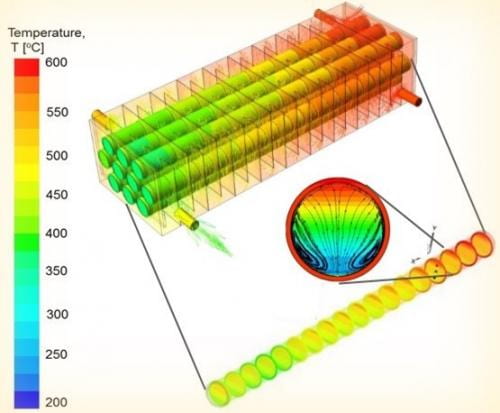 |
Numerical analysis of sulfur heat transfer characteristicsAmey Barde, Karthik Nithyanandam, Richard Wirz Sulfur promises low storage cost, high temperature stability, and high charge and discharge performance since it operates in the liquid-vapor regime at the temperatures of interest relevant to many important applications, such as combined heat and power (CHP) plants and concentrating solar power (CSP) plants with advanced power cycle systems. The present work investigates the thermal performance of elemental sulfur stored isochorically inside the pipes of a shell-and-tube thermal battery configuration with heat transfer fluid flowing over the storage pipes through the shell. We analyze the transient charge and discharge behavior of sulfur inside the pipes using a detailed computational modeling of the complex conjugate heat transfer and fluid flow phenomena. |
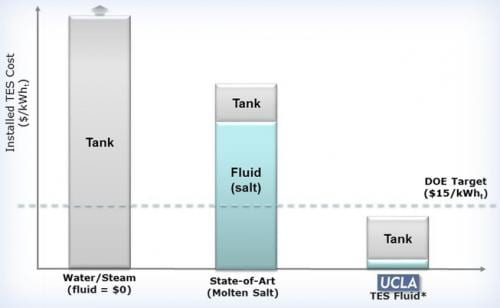 |
System and technoeconomic modeling of multi-phase and thermochemical thermal energy storageLouis Tse, Adrienne Lavine, Karthik Nithyanandam, Richard Wirz The goal of this task is to develop a tool for monitoring the performance of the developed TES system in operation with micro-CSP, parabolic troughs, and solar power towers. An in-house thermodynamic system/cost model informed by theoretical and numerical analysis of sulfur species equilibria is developed to estimate the cost and exergy efficiency of MacroTES for different CSP applications. The system model is designed to simulate the overall thermal energy system using sub-models for the solar field, thermal storage, and generation. Exergy analysis of the overall system illustrates opportunities for performance enhancement to maximize efficiency. This simulation tool optimizes the multi-variable equations of system specifications to meet the required cost and performance targets of Department of Energy (DOE). |
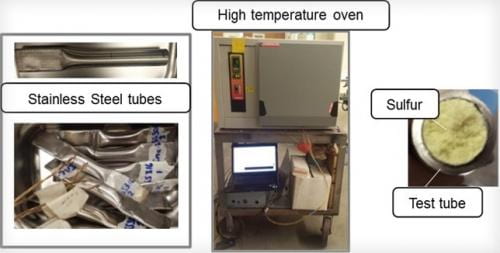 |
Material compatibility analysisGabriela Bran-Anleu, Richard Wirz The goals of the Material Compatibility Analysis task are to: (1) test the compatibility of primary tank materials with elemental sulfur; and (2) identify potential linings (if necessary) for tank materials. Three different alloys with potential application for containment of sulfur as an energy storage fluid, namely Stainless Steel 304, Stainless Steel 316, and Inconel 600, were studied. All alloys were thermally cycled to maximum temperatures of 500 °C and 600 °C, and kept at that temperatures for a prolonged period of time. Wall thickness measurements, SEM and EDS results for all the three different alloys were performed before and after sulfur exposure. Overall for the typical range of impurities in commercially available elemental sulfur, corrosion rates for high temperature solar thermal energy applications remained acceptable for SS 316 and Inconel 600 alloys. |
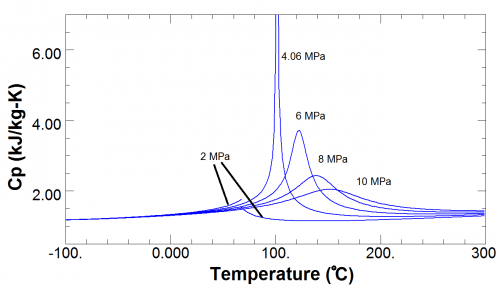 |
The thermodynamic potential of thermal energy storageBen Furst, Richard Wirz, Adrienne Lavine, Reza Baghaei Lakeh Thermal Energy Storage (TES) is utilized throughout industry and is considered an enabling technology for solar thermal power plants. Current state of the art TES systems rely on sensible heat storage in solids or liquids, and latent heat storage in the solid/liquid phase change. Preliminary studies indicate that other thermodynamic regimes that have been unexploited, such as the two-phase liquid/vapor regime and the supercritical regime, may also have beneficial TES characteristics. The goal of this effort is to characterize the TES potential of these regimes, and evaluate their utility. Analytic equations of state, thermodynamic theory and experimental data are being used to develop a coherent understanding of the possibilities offered by these thermodynamic regions. |
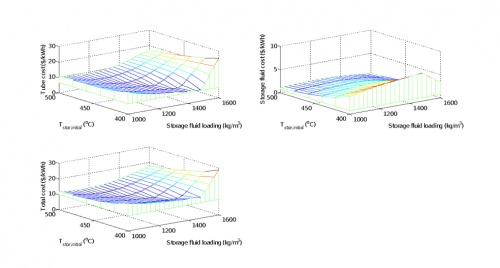 |
Exergy analysis and optimization of TES system design and performanceLouis Tse, Adrienne Lavine, Richard Wirz This study outlines a methodology for modeling and optimizing multi-phase thermal energy storage systems for solar thermal power plant (STPP) operation by incorporating energy and exergy analyses to a TES system employing a storage medium that can undergo multi-phase operation during the charging and discharging period. First, a numerical model is developed to investigate the transient thermodynamic and heat transfer characteristics of the storage system by coupling conservation of energy with an equation of state to model the spatial and temporal variations in fluid properties during the entire working cycle of the TES tank. Second, parametric studies are conducted to determine the impact of key design parameters on both energy and exergy efficiencies. The optimal values must balance exergy destroyed due to heat transfer and exergy destroyed due to pressure losses, which have competing effects. Optimization is utilized to determine parameter values within a feasible design window, which leads to a maximum exergetic efficiency of 87%. |
Wind Energy Storage
|
|
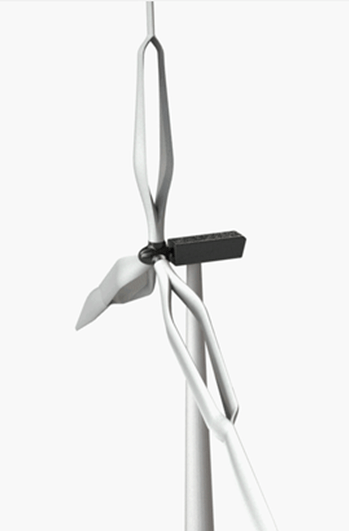 |
Aero-structural design investigations for biplane wind turbine bladesPerry Roth-Johnson, Phillip Chiu, Edward Lin, Richard Wirz Large wind turbine blades are being developed at lengths of 85-125 meters, in order to improve energy capture and reduce the cost of wind energy. Bending loads in the inboard region of the blade make large blade development challenging. The “biplane blade” design was proposed to use a biplane inboard region to improve the design of the inboard region and improve overall performance of large blades. This work uses a “structures-first” approach with aero-structural analyses to (1) examine the feasibility of the biplane blade, (2) determine how the dimensions of the biplane inboard region affect performance, and (3) compare the aero-structural performance of a 100-meter biplane blade to the Sandia SNL100-00 reference blade. Two-dimensional CFD simulations were used to compare the aerodynamic performance of a biplane with a thick monoplane. The lift-to-drag ratio and the maximum lift coefficient is significantly greater for the biplane than the thick monoplane for angles of attack of 0-15 degrees. Analytical methods and beam finite elements with cross-sectional analysis were both used to examine the performance of biplane blade structures. These structures varied in complexity from isotropic spars to composite spars to composite full blades. In each case, biplane blade structures were compared to monoplane blade structures of the same length, mass, and complexity. Simple load cases were applied to each structure and their displacements, bending moments, axial forces, and stresses were compared. Similar performance trends are identified with both the analytical and computational models. Parametric analyses show that gap-to-chord ratios bewteen 1.0-1.2 and joint length-to-span ratios of about 0.5 give good aero-structural performance. At the tip, the biplane blade increases flapwise structural efficiency by 20-40%, depending on the load. Edgewise structural efficiency was decreased by 27-35% at the tip. The benefits for the inboard region could lead to mass reductions in wind turbine blades. Innovations that create lighter blades can make large blades a reality, suggesting that the biplane blade is an attractive design for large (100-meter) blades. |
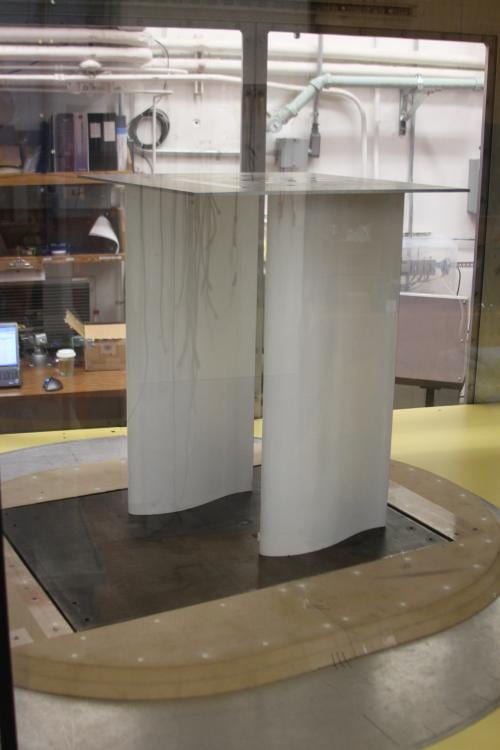 |
Aerodynamic performance of biplane wind turbine bladesPhillip Chiu, Perry Roth-Johnson, Richard Wirz Recent efforts in wind turbine blade design have focused on improving the aerodynamic performance of the inboard section of wind turbine blades. For structural reasons, this area of the blade typically uses thick airfoils that have poor aerodynamic performance. The “biplane blade” is one of a number of “multi-element” blade designs that seek to improve the aerodynamic performance of the inboard region. Through experiment and computations, we seek to better understand the aerodynamic performance of biplane wind turbine blades. Compared to traditional monoplane wind turbine blades, relatively little is known about the aerodynamics of biplane turbine blades. We seek to better understand the aerodynamics of biplane airfoils both quantitatively, by evaluating their aerodynamic performance, and qualitatively, by examining the flow phenomena around these blades. This understanding can better guide blade designers who wish to use biplane or other multi-element airfoils. In our 2D measurements and computations, biplanes with thick airfoils were shown to have improved lift when compared to single lifting bodies. A parametric analysis revealed how the aerodynamic performance was affected by the relative positioning of the two airfoils. Unique stall characteristics were observed – which may lead to reduced dynamic loading on the turbine blades. Going forward, we hope to reveal the mechanisms that lead to this improved aerodynamic performance. Through shape optimization, we will design optimized biplane profiles for various sections along the blade. Finally, using 3D CFD we will quantify the overall performance of rotors using biplane blades. |
Prof. Richard Wirz Anirudh Thuppul Angelica Ottaviano Mary Konopliv
Motivation:
Current fusion plasma-facing materials require a significant annual maintenance cost and degrade the core fusion plasma conditions.
UCLA-developed plasma-favorable volumetrically-architectured materials are a novel electrode technology providing
reduced erosion rates and plasma contamination
Discovery/Innovation:
Volumetrically-architectured materials provide persistent sputter reduction
Further and significant reduction is found by designing these materials to allow plasma-infusion
Goals:
Develop the next generation plasma-resilient/favorable materials that persistently reduce sputter for fusion devices:
- Demonstrate plasma-favorable materials by significant reduction (up to 80-90%) of plasma-contaminating sputterants
- Reduce operational cost by increasing the lifetime (5X steady to 10X pulsed over SOTA) of critical fusion components
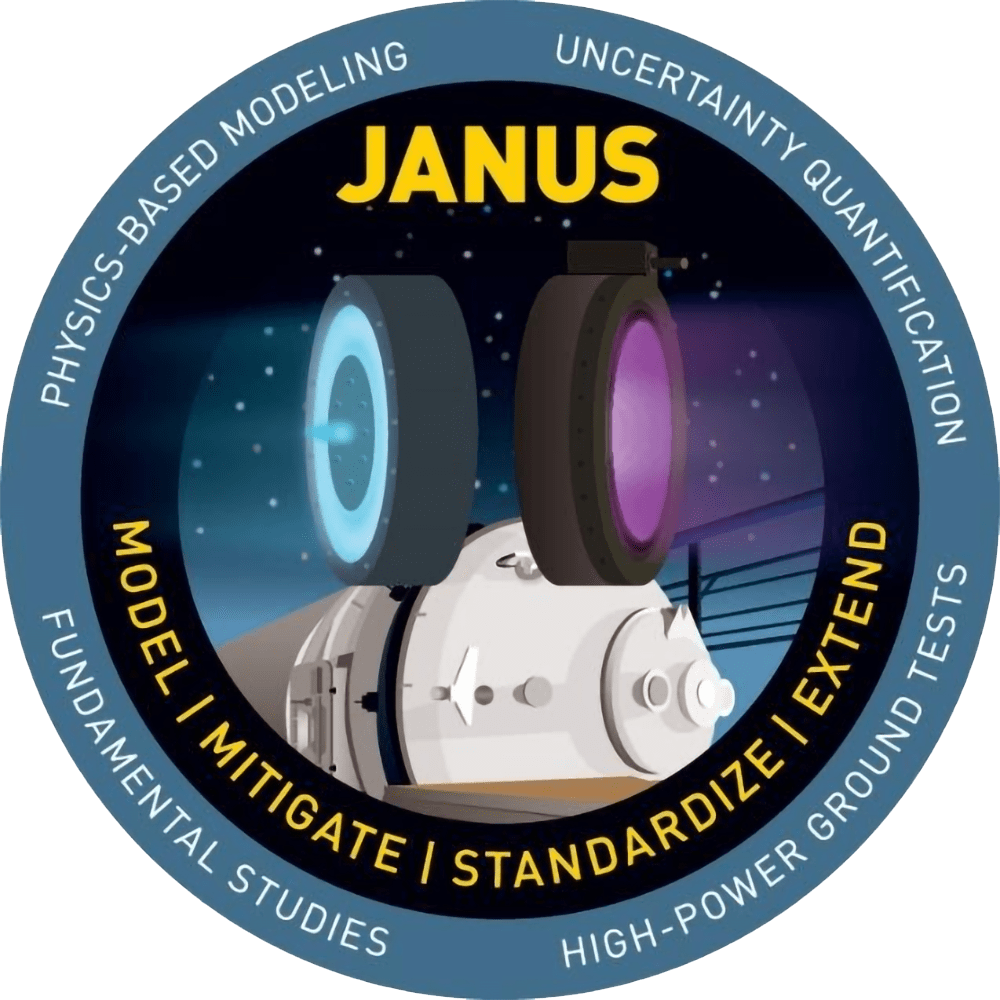
Joint AdvaNced PropUlsion InStitute
The recently-announced Joint Advanced Propulsion Institute (JANUS) will begin full operations in the fourth quarter of 2021. Until then, please see our news link here: https://samueli.ucla.edu/mae-professor-part-of-team-to-lead-15m-nasa-space-propulsion-research-institute/
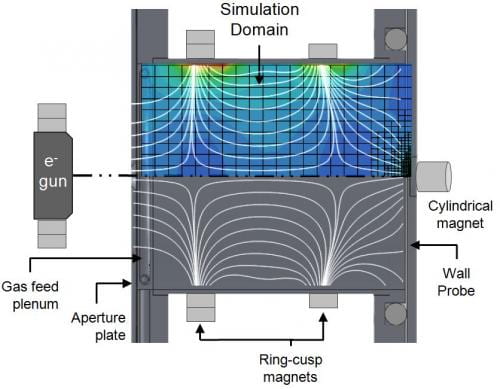 |
Particle-in-cell modeling for near-surface cusp confinement of micro-scale plasmaSamuel Jun Araki, Ben Dankongkakul, Richard Wirz Magnetic cusp confinement of plasma at conducting surfaces involves interactions between a highly divergent magnetic field, ions, electrons, neutral particles, and the pre-sheath and sheath conditions that develop along the surface boundary. Large plasma devices have benefitted greatly by using permanent magnet cusps for bulk plasma confinement for both terrestrial and space applications; however, the magnetic cusp confinement mechanisms and the associated plasma dynamics very near the conducting surface are poorly understood. This lack of understanding has prevented researchers of micro-scale discharges from fully realizing the benefits of cusp confinement and control at smaller scales, and has also prevented the optimization of larger discharges. We develop a computational model that properly treats the behavior of plasma very near the wall for a cusp confined plasma. The model will also serve as a tool to reveal important plasma mechanisms in the cusp region and will aid in the development of analytical description of particle motion in this region due to particle drifts, collisions, and electric field. The computational model employs the iterative Monte-Carlo (MC) method, tracking super-particles of different species (high energy primary electrons, ions, and plasma electrons) separately. In the model, particles are moved in electric and magnetic fields while they are weighted to the computational grid at every time-step. Once all the particles are tracked, the electric potential and field are updated using the densities computed from the last particle tracking subroutine. These calculations are repeated until the electric potential converges to a solution. This model can be considered as a simplified version of a particle-in-cell (PIC) model commonly used for kinetic simulation of plasma, as the electric field is computed asynchronously with particle tracking instead of being updated while the particles are tracked. This model will be extended to a hybrid model treating ions and plasma electrons as fluids, and will be used as a tool to design an efficient micro-scale discharge. The model will use a magnetic field aligned mesh to minimize the numerical diffusion that takes place when the mesh is not aligned with the magnetic field. |
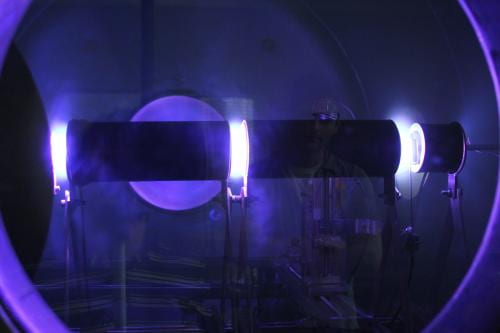 |
Plasma-Material Interactions for Electric Propulsion and Pulsed PowerChris Dodson, Taylor Matlock, Dan Goebel, Richard Wirz Degradation of plasma-facing materials is a significant problem in electric propulsion, pulsed power technologies, and fusion energy experiments. To reduce material degradation, new micro-engineered materials are being developed that reduce sputtering and thermal stress through an increased surface volume and area exposed to the heat flux, along with the use of micron-sized dendrites, nodules, or fibers that can deform independently. A systematic investigation is underway at UCLA to characterize the plasma-material interactions (PMI) of these materials under plasma exposure through experiments within the Plasma Interactions (Pi) facility. Pi consists of a high-power lanthanum hexaboride hollow cathode DC plasma discharge, several transport coils to the target region, a target manipulator arm, and a high-speed, high-voltage circuit for biasing the target for simulating the conditions relevant to pulsed power technologies. Material samples are exposed to a range of plasma temperature, flux, and fluence levels. Existing diagnostics include Langmuir and emissive probes for obtaining plasma temperature, density, and potential, scanning electron microscopy for qualitative erosion assessment, and energy-dispersive x-ray diffraction spectroscopy for material composition. Several diagnostic upgrades are also being implemented to improve the quality of information obtained: a set of laser confocal microscopes are being installed for in situ, quantitative evaluation of sample morphology changes during plasma exposure; optical emission spectroscopy will provide information on the content and temperature of the plasma species (including sputtered material) in the near surface region; and vacuum ultra-violet spectroscopy will provide information of the neutral gas density (typically xenon). To complement the experimental effort, a series of plasma models are being developed. A hybrid fluid/particle-in-cell (PIC) code DC-ION, developed initially for ion thrusters, is being modified to simulate the bulk plasma of the Pi facility to allow for optimization of the plasma discharge and magnetic field design. A fluid-based pre-sheath model will use the results from the bulk model and will couple to a full PIC sheath model in the near-surface region, which will determine the species currents to the wall and the sheath potential. The plasma models, coupled with thermo-kinetic material models being developed by professors Ghoniem and Kodambaka at UCLA, will self-consistently predict sputtering rates and changes to material and near-surface plasma properties. References [1] T S Matlock, D M Goebel, R Conversano and R E Wirz (2014) A dc plasma source for plasma–material interaction experiments |
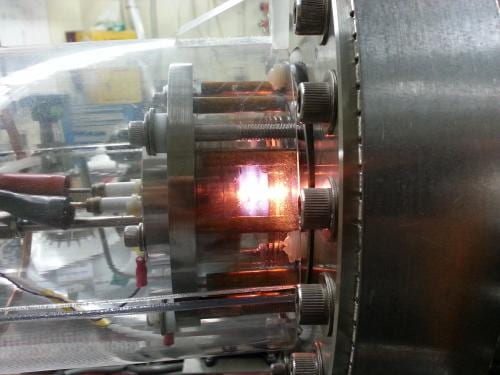 |
Simplified plasma experiment for investigation of plasma diffusion and transport mechanismsMarlene Patino, Taylor Matlock, Richard Wirz The interaction of charge-exchange collisions ions created in the plume of ion and Hall-effect thrusters interacting with background electric fields contribute to unwanted spacecraft surface sputtering and grid erosion, thereby limiting the thruster and spacecraft operation and lifetime. Improving our understanding of heavy species collisions (e.g. momentum-exchange and charge exchange collisions between ions and neutrals) in intermediately-ionized plasma is necessary for furthering the development and use of electric propulsion devices for deep space missions. This effort acquires detailed measurements from a simple, well-characterized plasma experiment that can precisely capture the behavior of heavy species collisions. This is accomplished by accelerating and steering an ion beam into an axisymmeteric test cell populated with neutrals, and taking precise low-current measurements of the test cell walls (from scattered ions that experience collisions) and downstream of the test cell (from unscattered beam ions). The simplified setup reveals ion transport mechanisms in a collisional environment that are otherwise hidden by complicated conditions of most electric propulsion devices. By providing full disclosure, these canonical experiments supply benchmark data for the development and validation of analytical techniques and computational codes that model plasma behavior, including the 3-D Improved Concurrent Electromagnetic Particle –In-Cell (ICEPIC) code developed by AFRL. Additionally, semi-analytical and computational models aid in the interpretation of laboratory measurements and to provide insight into future experimental modifications and design. Current work is focused on characterization of the ion beam (with various facility diagnostics and electrostatic modeling) throughout the facility and at the entrance of the Test Cell. Electron emission from plasma-confining materials due to ion impact are investigated by modifying the test cell to hold the target material in the beam’s line of sight. |
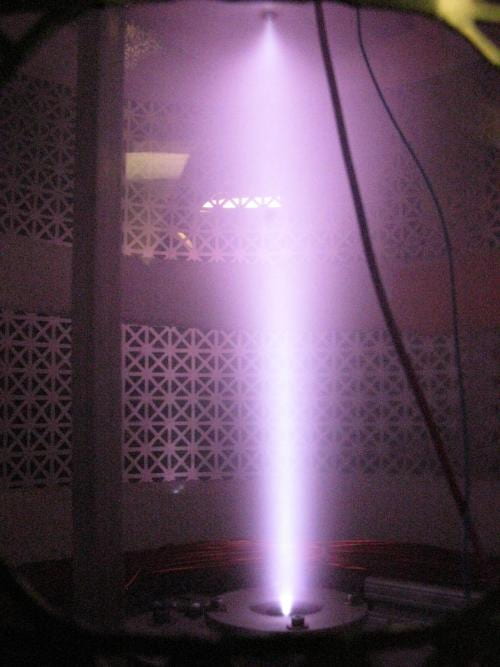 |
Near-surface cusp confinement of micro-scale plasmaBen Dankongkakul, Samuel Jun Araki, Richard Wirz The development of permanent magnet microdischarge on the scale of 1 cm requires an improved understanding of magnetic cusp confinement physics very near the anode. Larger magnetically confined discharges benefit from relatively low surface-to-volume ratios, which can provide favorable electron confinement and high ionization efficiency. As a result, designers of many larger cusp confined devices, such as ring-cusp ion thrusters, have been able to yield favorable performance for large discharges by focusing on the design of the macroscopic magnetic field structure far from the magnet surfaces.,, However, these permanent magnets also result in strong microscopic cusp structures that dominate a large region in smaller discharges, a region that involves interactions between a divergent magnetic field, multiple plasma species, and the sheath conditions near the surface. The experimental effort aims to better understand cusp physics by examining plasma behavior for both a single and multi-array of permanent magnet cusps. Previous work measuring primary electron loss have shown that it is strongly influenced by the upstream magnetic field structure. The current experiments using a simplified cusp confinement geometry will determine if this behavior extends to a weakly ionized plasma. Results can then also also be used to validate computational and analytical models. |
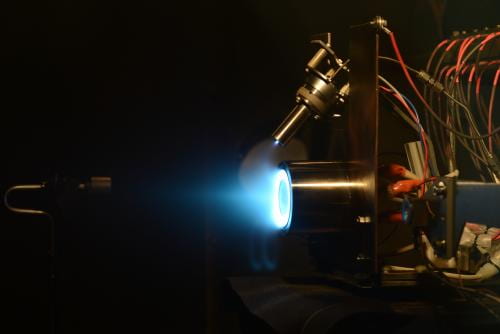 |
Demonstration and characterization of a low power magnetically shielded Hall thrusterRyan Conversano, Dan Goebel, Richard Hofer, Ioannis Mikellides, Ira Katz, Richard Wirz This research aims to demonstrate the applicability of magnetic shielding to low power Hall thrusters as a means to significantly improve operational lifetime. The key life-limiting factors of conventional Hall thrusters, including ion-bombardment sputter erosion of the discharge channel and high-energy electron power deposition to the channel walls, are well understood on all thruster scales. As thruster power is reduced to the sub-500 W nominal power regime, the increasing surface-to-volume ratio of the discharge channel and decreased thruster component sizes promotes increased plasma-wall interactions and susceptibility to overheating, thereby reducing thruster operational lifetime and performance. Although methods for compensating for these issues have been investigated, unshielded miniature Hall thrusters are generally limited to sub-45% anode efficiencies and maximum lifetimes on the order of 1,000 h. A magnetically shielded field topology aims to maintain low electron temperatures along the channel surfaces and a near-constant plasma potential near that of the discharge voltage across the discharge channel and along its full axial length. These features result in a reeducation of the kinetic energy of ions on trajectories to impact the channel surfaces to below the sputtering threshold, thereby preventing ion-bombardment erosion of the discharge channel. Improved confinement of high-energy electrons is another byproduct of the field structure, aiding in the reduction of electron power deposition to the channel. Magnetic shielding has been shown to dramatically reduce plasma-wall interactions on 4-6 kW Hall thrusters, resulting in significant increases in projected operational lifetimes with minimal effects to thruster performance. In an effort to explore the scalability of magnetic shielding to low power devices, two magnetically shielded miniature (MaSMi) Hall thrusters were designed and fabricated. The performance of the first thruster, called the MaSMi 40, was characterized at an operating condition of 275 V and 325 W. A peak thrust of approximately 13 mN with a specific impulse of approximately 1,100 s at an anode efficiency of approximately 22% were measured at the nominal operating point. Observations of the near exit plasma discharge during operation and the discharge channel after operation suggested that the outer channel wall of the thruster was well shielded while the inner channel wall appeared to be weakly shielded. Further analysis determined that the MaSMi-40 was unsuccessful in generating a symmetric magnetically shielded field topology; however, the shortcomings of the magnetic circuit design were well understood. The second design iteration in the development of a low power magnetically shielded Hall thruster was the MaSMi-60. Magnetic field measurements confirmed that a symmetric and fully shielded magnetic field topology was generated by this device across a wide range of possible operating conditions. At operating powers of less than 150 W to nearly 750 W, the key performance metrics of the MaSMi-60 included a measured thrust ranging from approximately 8 mN to over 33 mN with anode specific impulses ranging from under 800 s to nearly 1400 s at anode efficiencies of up to approximately 29%. Visual observations of the discharge plasma and channel walls during and after thruster operation offered strong evidence of magnetic shielding while the discharge was ignited. The plasma properties that define magnetic shielding were then confirmed using experimentally validated computational simulations of the MaSMi 60’s plasma discharge. |
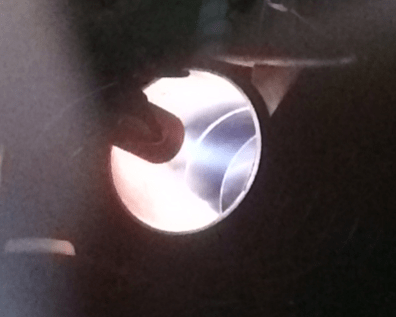 |
Laser-induced Fluorescence Measurements of Energetic Ions in High Current Hollow CathodesChris Dodson, Benjamin Jorns, Richard Wirz This project investigates the existence of high energy ions generated in high current hollow cathode plumes using Laser Induced Fluorescence (LIF) and plasma probes. Ion acoustic turbulence is generated from a high electron to ion relative drift velocity, and wave-particle interactions lead to heating of plasma in the plume. Energetic ions can cause erosion of cathode surfaces used for long duration missions using Hall thrusters. We test a 100 A-class hollow cathode at JPL and perform LIF measurements to study the formation of energetic ions and the evolution of the IVDF in the plume. Ongoing studies include analytical and computational approaches to model the wave heating mechanisms. References |



